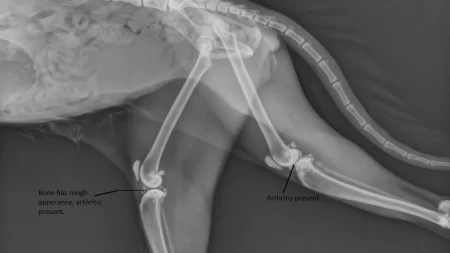Yes, but it is not a common occurrence. A cat’s tail is an important part of its body, as it helps with balance, communication, and expression. However, there are some situations that can cause a cat to lose its tail, either partially or completely.
In this article, we will explore the causes, symptoms, and treatments of cat tail loss, as well as some tips to prevent it.
What Causes a Cat’s Tail to Fall Off?
There are a few reasons why a cat may lose its tail:
Injury or trauma
Cats can injure their tails by catching or pulling them, getting them shut indoors, or getting them run over. These events can fracture the tail bones, tear the skin and muscles, or cut off the blood supply. Severe trauma may cause the tail to die and fall off.
Tail Degloving
Degloving is when the skin detaches from the underlying tissue. It often happens when a tail gets caught on something while a cat is trying to pull away. This cuts off blood flow causing the skin to die. The dead tail skin eventually falls off.
Infection
Untreated wounds or abscesses on a cat’s tail can develop severe infections. This may spread to the tail bone causing bone death (osteomyelitis). The infection can also restrict blood supply to the tail. Loss of bone and blood supply will lead to the tail falling off.
Nerve or blood vessel damage
Injuries, blood clots, or medical conditions like diabetes can damage nerves and blood vessels in the tail. A lack of nerve signals and blood supply will cause the tail tissue to die and fall off.
Is It Normal for a Cat’s Tail to Fall Off?
Complete tail loss is not a normal occurrence in cats, but it can happen in some specific cases:
Tail loss in certain breeds
Some breeds like the Manx cat are born without tails due to their genetics. Other breeds like the Japanese Bobtail have naturally short or kinked tails. However, these tails don’t fall off completely.
Tail loss as a result of medical conditions
Underlying medical conditions like infections, cancer, bone disease, or nerve damage can restrict blood flow and lead to tail loss. But this doesn’t happen spontaneously in healthy cats.
Treatment and Care for a Cat with a Missing Tail
Here is how vets treat tail loss in cats and how you can care for your cat at home:
Veterinary evaluation and treatment
If the tail is still attached but damaged, the vet may amputate it to prevent further complications. They will check for fractures, nerve damage, and loss of blood flow to determine how much needs removal.
Proper wound care and infection prevention
Vets will prescribe antibiotics, and pain medication, and recommend keeping the wound clean. Cats may need an Elizabethan collar to prevent licking and biting. Watch for signs of infection and take the cat back if any develop.
Monitoring for any complications
Nerve damage can persist after tail amputation causing long-term pain. The cat’s balance may be affected. Also monitor the wound site for abnormal bleeding, swelling, or fluid buildup. Follow up with the vet as needed.
Prevention and Tips for Keeping Your Cat’s Tail Healthy
Here are some tips to minimize the risks of your cat losing its tail:
Minimizing risks of injury
Keep doors shut when not in use. Cover a sharp table or counter edges. Keep towels from hanging where cats can catch tails on them. Put twist ties on window blinds. Cover electric wiring.
Regular grooming and hygiene
Gently comb and brush your cat’s tail to remove any knots, mats, or embedded foreign objects. Keep the area clean.
Providing a safe and stimulating environment
Give your cat appropriate outlets to engage its natural instincts like scratching posts. Cats shouldn’t need to resort to playing with human objects that can injure them. Rotate toys to keep them interested.
Regular veterinary check-ups
Get regular check-ups to catch any medical conditions early. Vets can also trim nails and clean anal glands to prevent self-injury from scratching and biting of irritated areas.
While rare, the tail loss can occur in cats. Proper care techniques and vet supervision can help prevent and appropriately treat tail injuries if they do happen. With some adjustments, cats can adapt well to life without a tail if necessary. Stay alert for signs of complications and keep your home cat-friendly.







